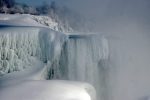Yes, the graph you posted is what I was looking for.Sharhamm wrote:is this what you need?
There's no evidence in these two graphs that machine failed to lower the pressure from IPAP to EPAP during any of your exhalations.
Here's the picture you posted:
 [/quote]
[/quote]Here's my analysis of what's going on:
If you look at the flow rate curve, your inhalations are the part of the curve above the 0 line. The exhalations are when the flow rate curve is below the 0 line. In eyeballing the Mask Pressure curve and the flow rate curve together, it appears (to my eyes) that everytime you start to exhale (the flow rate crosses the 0 line while going down), the mask pressure curve drops appropriately from 16cm to 12cm.
That's not to say that you didn't wake up finding it hard to exhale. But the cause of your feeling like you could not exhale was something other than the machine failing to detect an exhalation.
If I had to guess what happened, I'd say that there's some kind of nonrespiratory related arousal that happens around 03:24:30 (where there is a sudden increase in the size of the inhalations and exhalations AND a increase in respiratory rate) and between 03:24:30 and 03:28:45 you're in a transitional phase between sleep and wake---i.e. your body is figuring out whether it wants to go back to sleep or to wake up fully. And that you actually wake up enough to realize that you're awake around the time you turn the machine off at 03:28:45.
An alternative interpretation of the same data is that you suddenly aroused all the way to wake around 03:24:30 for some nonrespiratory-related reason. And the breathing pattern between 03:24:30 and 03:28:45 is wake breathing, but your conscious brain is still in the process of waking up enough to remember this wake and so you're still groggier than you think you were. You may even have drifted back into stage N1 sleep very briefly between 03:27:00 and 03:28:15 when the breathing pattern is very, very regular and looks a lot like the sleep breathing pattern that's evident before the probable wake/arousal that happened aroud 03:24:30.
In either scenario, I suspect that the sensation that the machine was not properly decreasing the pressure came from your still groggy conscious brain noticing the pressure and noticing that as the voluntary nervous system took over control of your breathing that it was harder to exhale than expected----possibly because the groggy conscious brain had perhaps forgotten for a moment that you had a mask on your nose. And exhaling against 12cm of EPAP pressure is harder than exhaling without a mask on.
Personally I'd say that you shouldn't worry about these events: I think the more you worry about this kind of event, the more likely your conscious brain will think: "Whoa, I need to fully wake up and figure out what's wrong" when you have similar, nonrespiratory-related arousals; and that kind of reaction will cause you to wake up more fully and stay awake longer, which will allow you to notice all kinds of "glitches" that aren't really there.
What you want your conscious brain to think during this kind of perfectly normal kind of nocturnal arousal is: "Everything seems to be just fine, so let's get back to sleep and forget the fact that I woke up for a minute or two." The best way to encourage your conscious brain to not over react to this kind of an arousal is to not worry about them when they happen and you happen to remember them.








